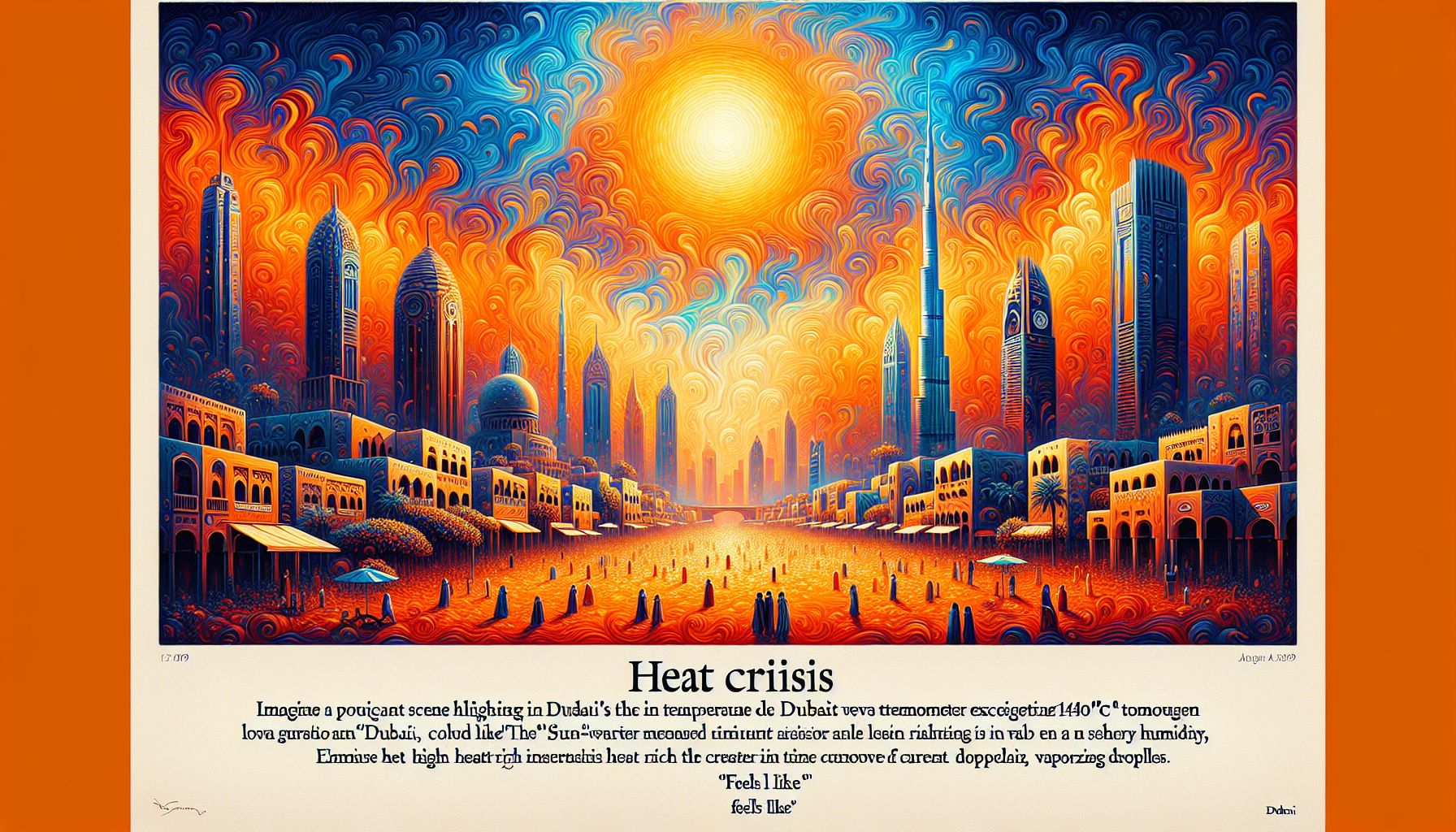Dubai's Heat Crisis: Temperatures Soar Past 60°C, Raising Alarm

Dubai, Monday, 5 August 2024.
Dubai faces unprecedented heat, with ‘feels like’ temperatures exceeding 60°C (140°F) multiple times this summer. The extreme conditions, exacerbated by high humidity, pose severe health risks and underscore the urgent need for climate resilience strategies in urban planning.
The Heat Index and Health Risks
The extreme heat in Dubai this summer has been relentless, with temperatures at Dubai International Airport reaching a high of 42°C on July 20, 2024. However, due to intense humidity, the ‘feels like’ temperature soared to a staggering 62°C, according to the US National Weather Service[1]. This combination of high temperatures and humidity significantly increases the risk of heatstroke and other heat-related illnesses, making it a critical public health issue.
Impact on Daily Life
The extreme heat has severely impacted daily life and the economy in Dubai. Luxury hotels have seen a steep decline in occupancy rates, dropping to 67.8% in June and July from an average of 81% earlier in the year[2]. Hotel rates have also plummeted, with prices dropping to $250 per night in June and July, compared to the year-to-date average of $435. This reflects the broader challenge of maintaining tourist inflow during the peak summer months.
Global Context and Broader Implications
Dubai is not alone in facing extreme heat. Globally, temperatures have been rising, with Monday, 5 August 2024, recording the hottest day ever on Earth at a global average of 17.15°C (62.87°F)[3]. The effects of climate change are felt worldwide, from the scorching heat in Phoenix, Arizona, to record-breaking temperatures in Las Vegas and severe weather events like Tropical Storm Debby in Florida. This global context underscores the urgent need for climate resilience and sustainable solutions.
Innovative Solutions for Climate Resilience
In response to these extreme conditions, several innovative solutions are being implemented to improve climate resilience. For instance, Dubai has started to incorporate green building designs and advanced cooling technologies to mitigate the impact of extreme heat. These include reflective roofing materials, increased green spaces, and the use of more efficient air conditioning systems. Moreover, there is a push towards renewable energy sources to reduce the city’s carbon footprint.
Future Prospects and Challenges
While these measures are steps in the right direction, experts warn that they may not be sufficient to combat the escalating climate crisis. The Middle East, including Dubai, is warming at a rate of 0.45°C per decade, significantly faster than the global average[4]. This rapid warming, combined with the region’s unique geographical features, makes it particularly vulnerable to extreme heat events. Therefore, comprehensive and sustained efforts in climate adaptation and mitigation are crucial for the future.

